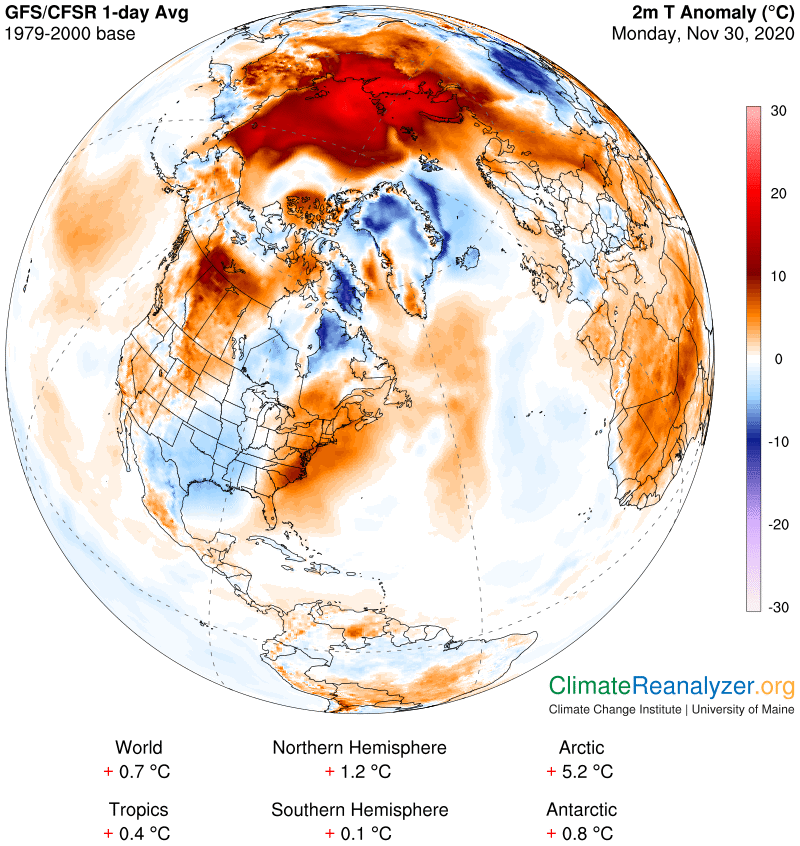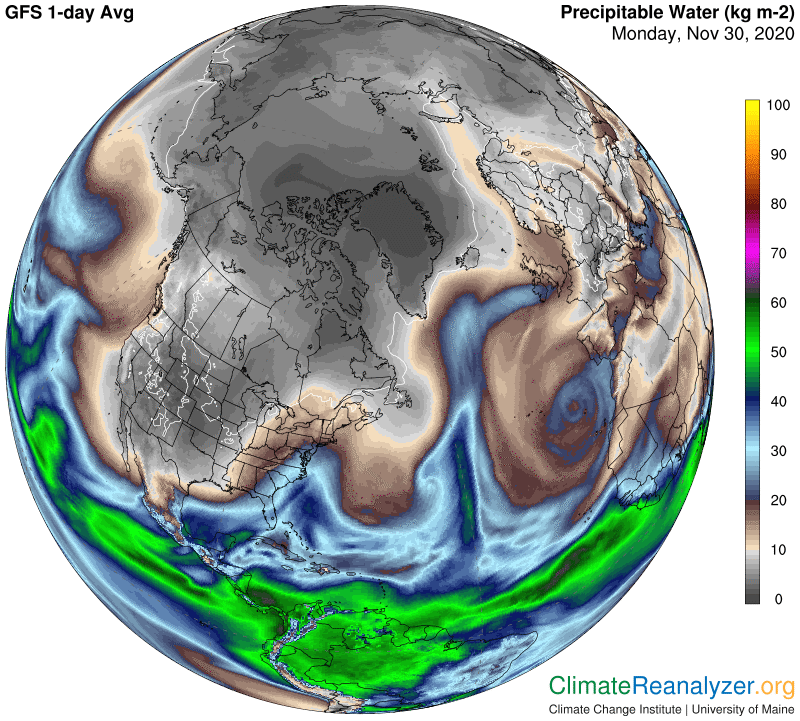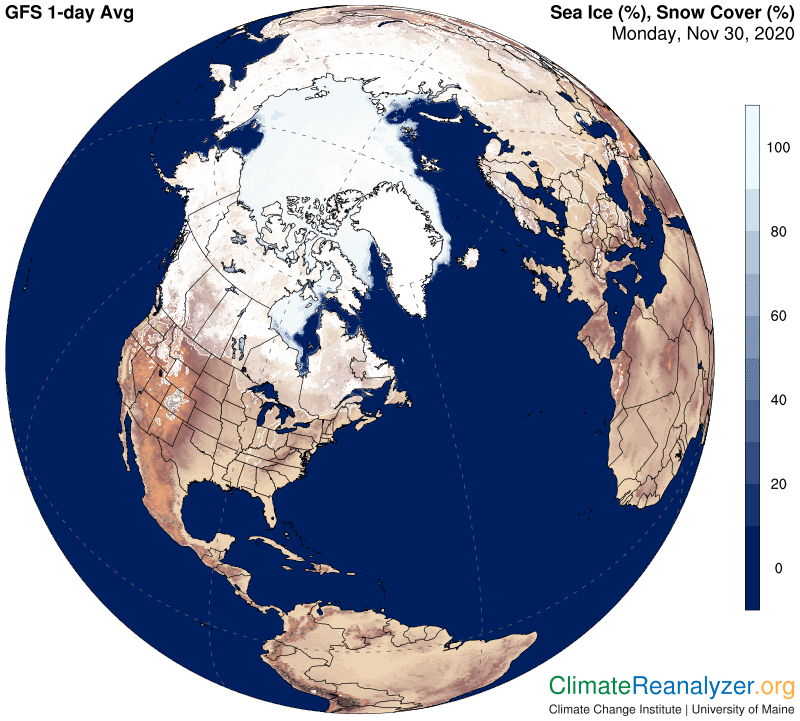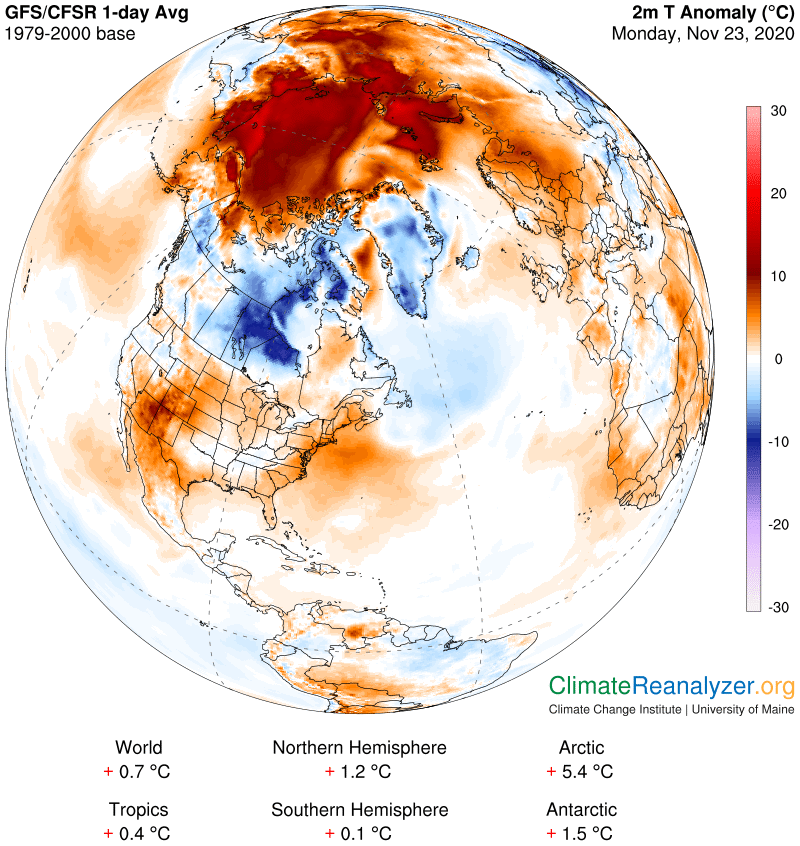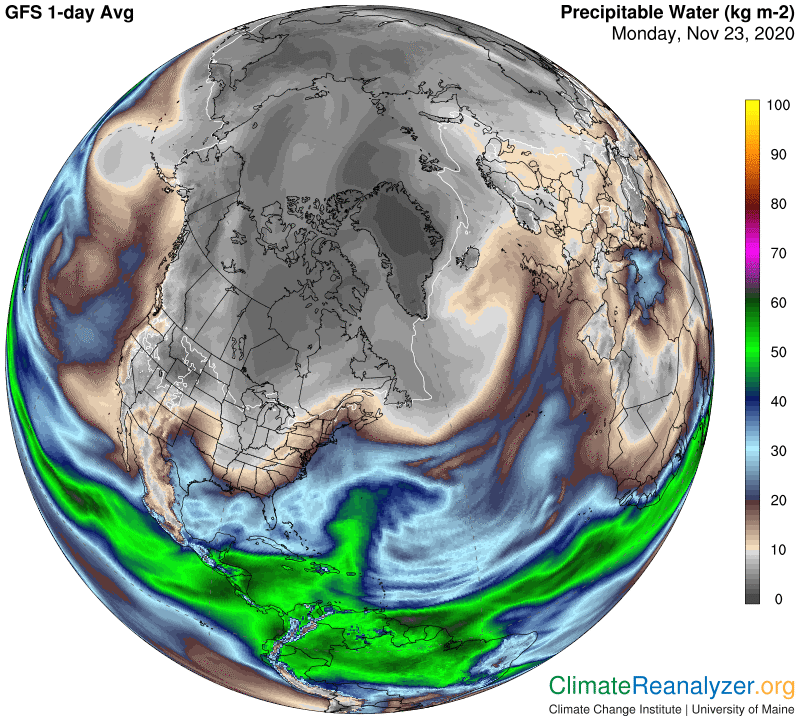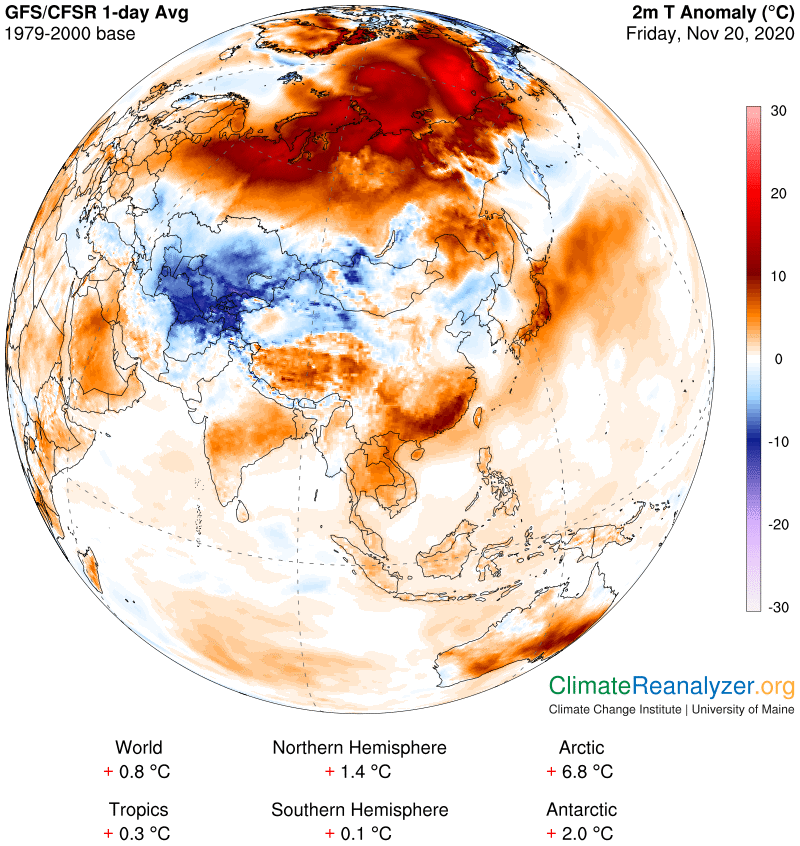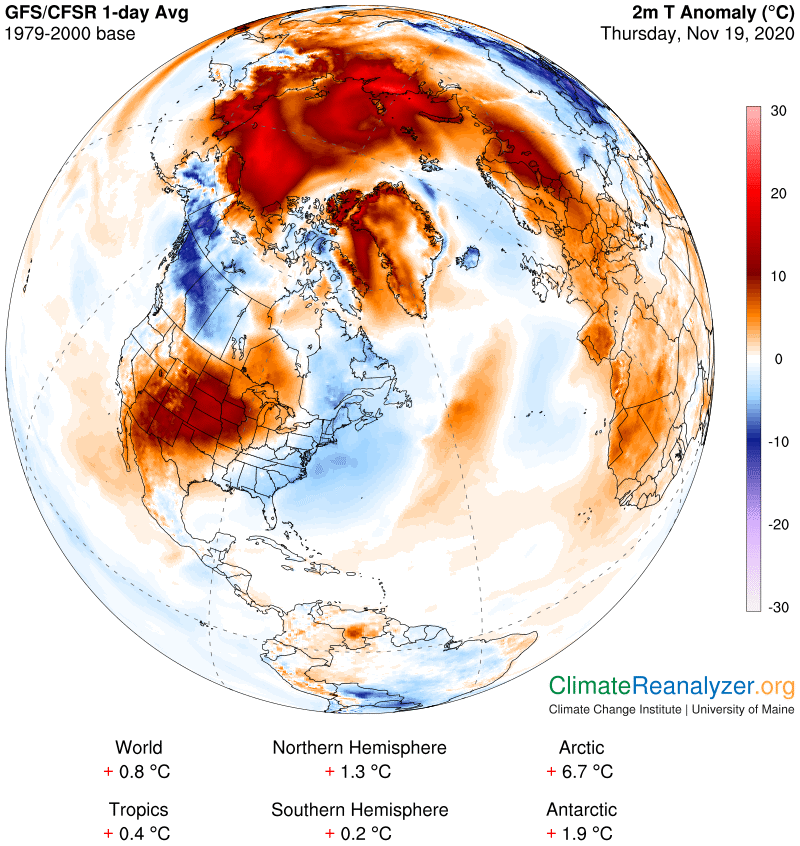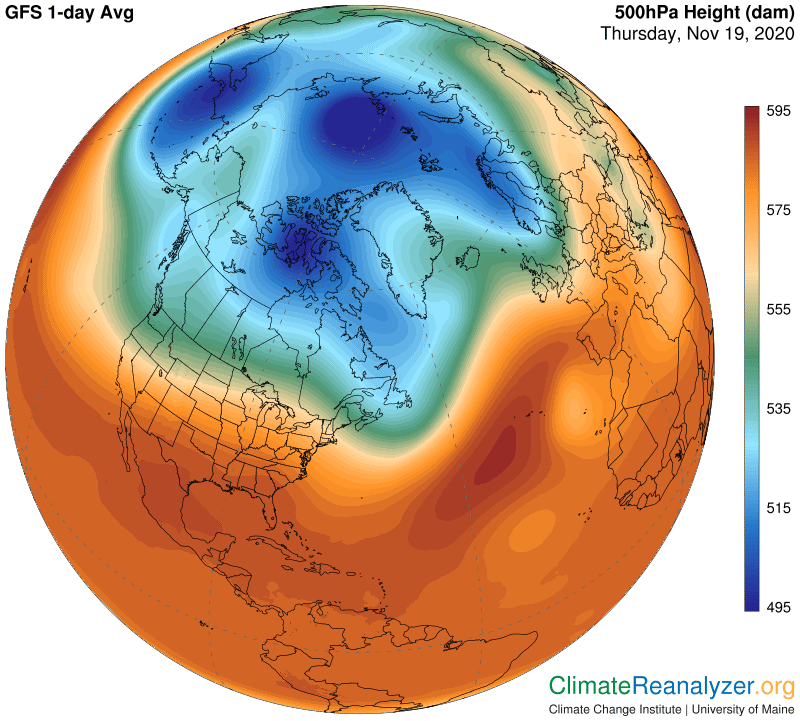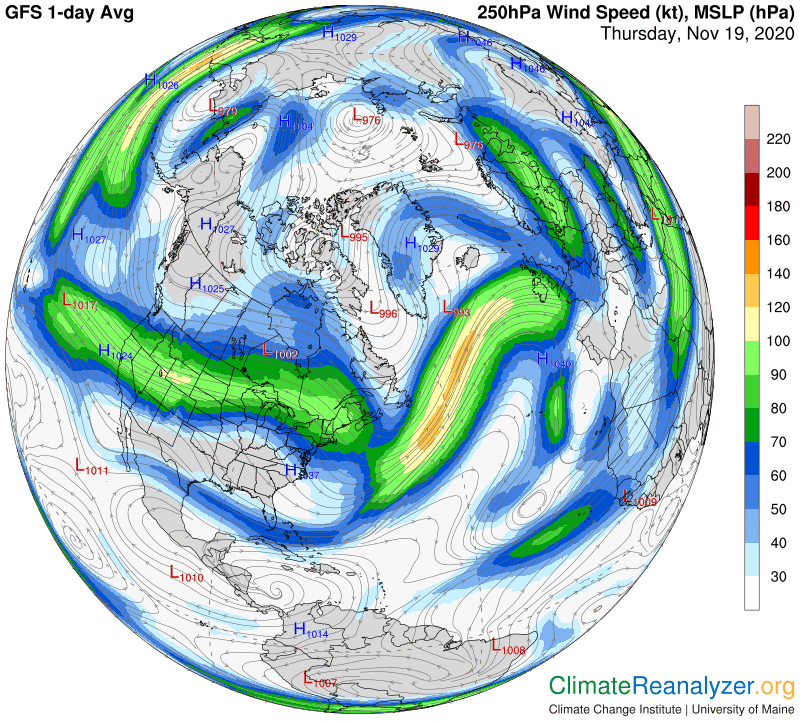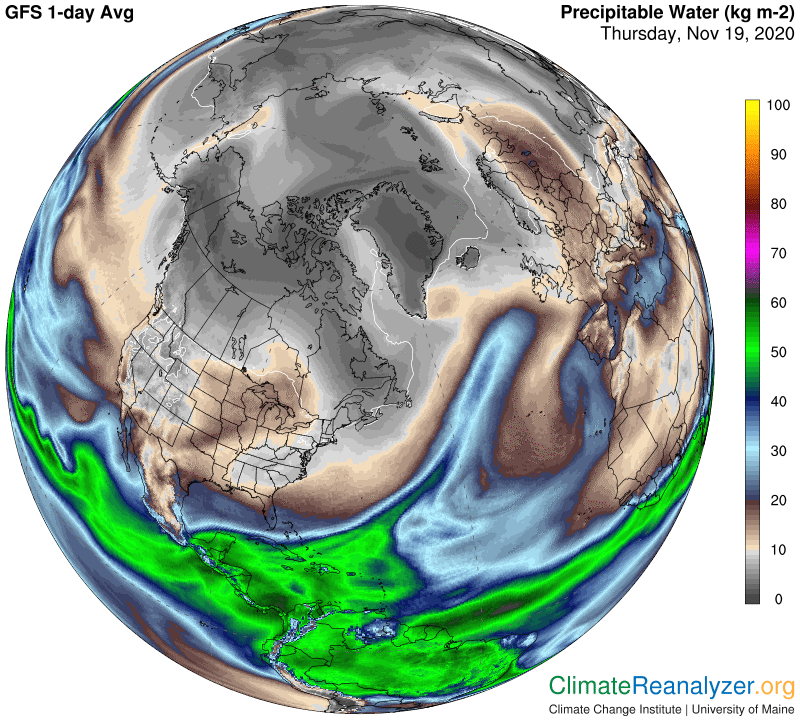North America has a potent warm temperature anomaly of its own today, not unlike the one we saw yesterday in Siberia. This one, as usual, involves a big increase in the amount of total precipitable water (TPW) above the surface on this day, compared with what we normally would be seeing at this time of year in the same location. As explained yesterday, I am now thinking of TPW in its entirety, including all of the airborne products of condensation along with gaseous water vapor, as if the complete assembly were itself a regular greenhouse gas, all because I keep seeing greenhouse energy effects from TPW that are roughly similar to those assigned to water vapor alone when the comparative weights are the same. Practically all of the observations I am able to illustrate are based on TPW readings, not water vapor, so we’ll see how this all works out. What is especially interesting today is the likelihood that sea surface temperatures in a large part of the Pacific Ocean, as shown in this first image, have most likely played a key role in the development of the temperature anomaly that will follow. There is a whole set of cause and effect relationships that will be introduced after that.

This ocean surface anomaly, which appears to be reaching highs near 3 degrees is spots, has been around for months, and is having a number of regular effects. One ordinary effect has been to raise the potential for added evaporation from waters in that part of the Pacific. Some of the added vapors should be able to rise high up in the atmosphere, where they could join and enlarge the vapor streams that enter the upper-level wind system every day. The durable nature of the sea surface temperature anomaly we are getting also constitutes a very direct cause for durable air temperature anomalies in close proximity to the ocean surface, as we see on this next map. But what about the close-by major on-land anomaly that we also can see? How is it connected on this day?

When high air temperatures stay in place in any one location for more than a few days, within an area of large size like the long-term warm ocean surface we are seeing, the upward pressure caused by normal air expansion will have an effect on patterns of air pressure directly overhead, causing them to be distorted. The effects should actually be realized in this situation, and I believe they are in evidence when we study the map of 500hPa Geopotential Height configuration, as next displayed. The relative placement of different pressure gradients is being altered for a reason best explained by the intrusion of upward pressures from below. Some of the alterations are in the form of a blurring of the normal edges between different lines of pressure, an effect that you can see here by looking closely at the blue and green zonal margins once they have been bent onto a looping northward course:

These margins that have become so blurry also happen to represent the homes of two major jetstream pathways, and the winds that traverse these pathways are undoubtedly weakened as a result. The same winds are also weakened by any more-than-minor bending of their pathways, or in any situation where two different pathways that are normally in close proximity are drawn farther apart. The actual pattern of jetstream deformation that we see in the image today expresses all of these principles:

This kind of jetstream deformation opens up unusual opportunities for any water vapor streams that are present to make poleward advances, in accord with their normal inclination. (I should be calling them precipitable water (PW) streams because at this point, while still intact, their vapor has assuredly experienced a considerable amount of condensation.) Simply put, if jetstream winds are missing in action they can no longer interrupt the progress of PW streams. What we are seeing is a classic example of how a stream can advance when there is nothing in the way, and this stream happens to be one of the big ones, giving added drama to the scene. There is something else to be noticed here. The coastal mountain range plainly did not prevent the high-altitude layer of PW from continuing to advance without much loss of content. It’s volume is mostly still there when it gets to the other side of the range. The total PW reading unique to the area of range location is greatly reduced simply because the physical size of the lower part of the atmosphere, and any low-level PW it would contain, is eliminated by all that tall rock, then naturally restored on the other side:

Carl








